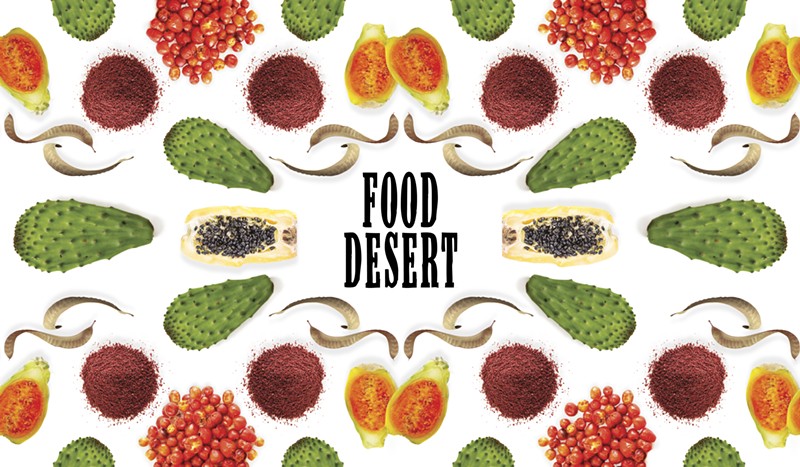
Amazing Edible Foods From The Desert.
Exploring Edible Foods in the Sonoran Desert
The Sonoran Desert, stretching across parts of Arizona, California, and Mexico, is a harsh yet vibrant ecosystem. Despite its arid climate and extreme temperatures, this desert is home to a wide variety of edible plants that have sustained indigenous peoples for centuries. Today, these foods are celebrated for their unique flavors and nutritional benefits. Let's explore some of the most remarkable edible plants you can find in the Sonoran Desert.
1. Prickly Pear Cactus (Nopal)
The prickly pear cactus is one of the most iconic plants in the Sonoran Desert. It produces both edible pads, known as "nopales," and fruit called "tunas." Nopales can be harvested year-round, and they are often grilled, boiled, or sautéed in Mexican cuisine. They have a slightly tart, green-bean-like flavor and are rich in fiber, vitamin C, and antioxidants.
The fruit, which ripens in late summer, is sweet and juicy with a flavor reminiscent of watermelon. It can be eaten raw, juiced, or made into jams and candies.
2. Saguaro Cactus Fruit
The saguaro cactus is a symbol of the American Southwest, and its fruit is a prized food source in the Sonoran Desert. The fruit ripens in early summer and is harvested using long poles. Saguaro fruit is sweet, with a taste similar to figs or strawberries, and is often eaten fresh, dried, or made into syrup or jam.
Indigenous groups, such as the Tohono O'odham, have traditionally harvested saguaro fruit as part of their diet and cultural practices. The seeds can also be dried and ground into flour.
3. Cholla Buds
Cholla, a type of cactus, produces edible buds that are a traditional food for many desert-dwelling peoples. The buds are typically harvested in the spring before the plant flowers. After being carefully harvested to avoid the plant's sharp spines, the buds are boiled or steamed to remove bitterness and then dried for storage.
Cholla buds are rich in calcium and have a slightly tart, artichoke-like flavor. They can be rehydrated and added to stews, salads, or eaten as a side dish.
4. Mesquite Pods
Mesquite trees are common in the Sonoran Desert, and their pods are a valuable food source. The pods ripen in the late summer and can be ground into a sweet, nutty flour that is high in protein and fiber. Mesquite flour has a low glycemic index, making it an excellent choice for those managing blood sugar levels.
This flour can be used in baking, as a thickener for soups and stews, or to make traditional foods like mesquite pancakes and flatbreads.
5. Amaranth
Amaranth is a drought-resistant plant that thrives in the Sonoran Desert. Both its seeds and leaves are edible. The seeds are highly nutritious, packed with protein, fiber, and essential amino acids, and can be cooked like quinoa or ground into flour.
Amaranth leaves, which are also edible, can be used like spinach in salads, soups, and sautés. The plant is a staple in many indigenous diets and has gained popularity as a superfood in recent years.
6. Devil's Claw
Devil’s Claw is a lesser-known but fascinating plant of the Sonoran Desert. The pods, harvested in the summer, have a nutty flavor and can be boiled or roasted. Indigenous peoples also use the dried pods in basket weaving, making this plant an important cultural resource.
The seeds inside the pod can be eaten raw or ground into flour. Devil's Claw is also known for its medicinal properties, used traditionally to treat pain and inflammation.
7. Chiltepin Peppers
Chiltepin peppers, often called the "mother of all peppers," are tiny but pack a serious punch. These wild peppers grow in the shade of desert shrubs and ripen in late summer to early fall. They have a bright, fiery heat and are often dried and crushed into a spice.
Chiltepins are rich in vitamins A and C, and they add a distinctive kick to salsas, sauces, and other dishes.
Conclusion
The Sonoran Desert is a land of surprising abundance, where the plants have adapted to thrive in harsh conditions. These foods are not just survival staples but are rich in flavor and nutrition, offering a unique taste of the desert. Whether you're exploring the desert or looking to incorporate new ingredients into your cooking, the edible plants of the Sonoran Desert provide a delicious and healthful connection to the natural world.

Leave a comment